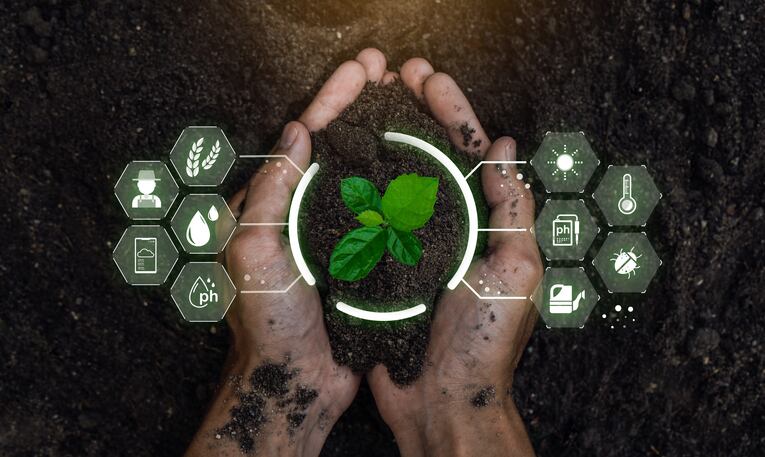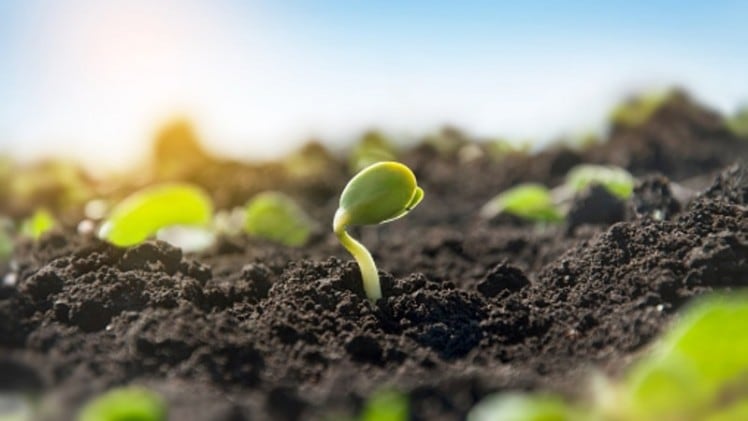Regenerative farming was at hot topic at the recent Animal Agtech Innovation Summit held in the Netherlands.
Ruud Overbeek, FoodChain ID SVP, corporate development & strategic relationships, told the event that the practice is “not a static state, it is a journey”.
For a successful journey from conventional to regenerative farming you need transparency, certification and standards, he said.
Although it has no formal agreed definition, regenerative agriculture aims, very generally, to ensure healthy soils, increase biodiversity, restore ecosystem balance and mitigate the acceleration of climate change while enabling farmers to create a sustainable business.
“Agriculture is one of the big contributors to greenhouse gas emissions,” Overbeek, speaking with AgTechNavigator, explained. “At the same time, our sector has the ability to fight this by stepping up the carbon sequestering in the arable soil we use for food and feed production.” This makes agriculture “unique and capable to reach net zero or even net positive farming systems,” he said.
Opportunity lost?
But a lack of carbon credits, or carbon offsetting, created at farm level is proving a bottleneck for adoption, he complained. “We have to increase the carbon offsite voluntary market by 50-fold to become at least carbon neutral by 2050,” he said. Yet, less than 1% of carbon credits are created at farm level.
The carbon market is too focused on and designed for non-agricultural industries. There is therefore an “enormous gap” in what is possible in farming.
“The need to fight climate change and to take action has never been bigger as today,” said Overbeek. Agriculture has already made huge steps in efficiency and sustainability over the last years, he told us.
But to unlock its green potential to the fullest and to encourage more farmers to make the transition to regenerative farming “we have to make it easier, more transparent and more rewarding for farmers to make the transition to regenerative farming.”
Clear business models needed
Regenerative farming also has to come with clear business models, said Overbeek. Why would a farmer invest in new practices without knowing the benefits or rewards when they start to minimise or remove tillage or reduce pesticides for example? “This is why it is important to verify the practices that farmers investing in, measure and monitor these practices, and translate this to a certain amount of carbon credits or other types of awards or premiums.”
US-based FoodChain ID already works with more than 30,000 companies across the global supply chain with technology-enabled solutions and expertise to keep the food supply chain safe and transparent. It also recently launched a new global standard for the certification of regenerative agricultural practices for farmers.
“We felt that most of the regenerative agriculture certification schemes do not have the ability to measure progress,” explained Overbeek. “This is why we have recently launched the so-called Regenerative Agriculture Standard. It is an independent, globally applicable, voluntary certification scheme that incorporates environmental elements and regenerative farming requirements for soil health and land management.”
It offers four certification levels from “under conversion” through to “full expert” regenerative principles, allowing the farmers to progress in their journey towards more regenerative practices and get recognition for it. It is applicable to both organic and non-organic farmers and can be combined with other certification schemes.
And it is not only about selling carbon credits. “We also see more different business models popping up such as carbon in-setting and injecting the money back into the farm. It is up to the farmer what works best for them.”
For example, FoodChain ID is involved in a couple of pilot projects in Brazil where it works with governments, farmers and other regional stakeholders to generate carbon credits on farms and use this money to create micro-funds to insure the farmers against weather events and such. This not only secures their livelihood, it is also an incentive to farm better and keep improving farm practices, claimed Overbeek.
It also works with non-GMO soy farmers to apply regenerative farming practices to reduce deforestation. This does create carbon credits, but also makes sure they secure trade with the EU by complying with the new EU deforestation rules. “With our new standard on regenerative agriculture and working together – and thinking along – with all stakeholders, we hope that we can stimulate a more closed loop in carbon credits to reap the full potential that agriculture has to reverse climate change.”
Communication of the benefits also vital
Is it crucial, meanwhile, that the industry communicates “what we do, the science behind it, and the progress we make. This is very important to inspire other farmers and inform consumers about the positive things that are happing in the feed and food chain.”
“In the whole food production chain, there is an increasing demand for reporting on environmental footprint to be able to claim certain sustainable or green labels,” Overbeek said. “And this will be translated in more regenerative farming practices in the coming years, because we become stronger in building solid business models around it.”
For instance, the benefits that regenerative farming practices bring the livestock sectors are critical too in unlocking opportunities for farmers.
“We know for example that animal feed contributes a lot to the total environmental footprint of meat, milk and eggs. If we can use more raw materials such as wheat, maize, soy, etc in livestock diets coming from regenerative farming practices, we can significantly reduce the environmental impact of feed and hence animal products.
"This way, farmers can comply with current climate reduction goals which are set by their suppliers such as a dairy processor or retailer, but also be better prepared for the future.”





